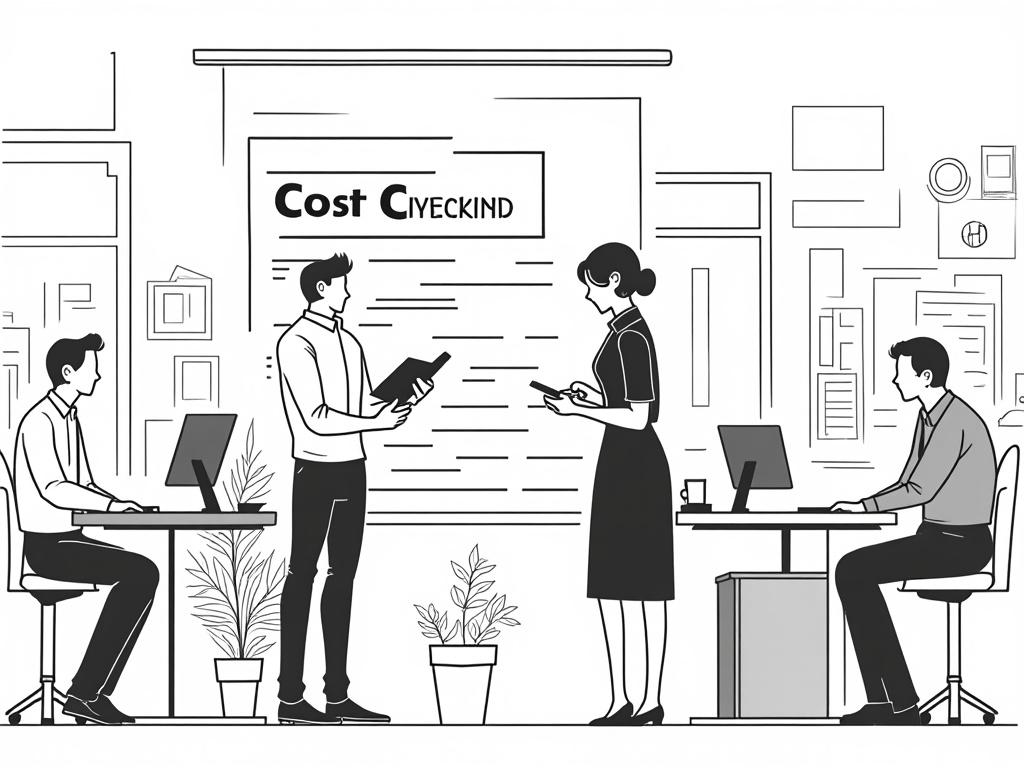
The Complete Guide to Computing Gratuity: Mastering Employee Benefits Calculations
Reading time: 12 minutes
Ever wondered how much gratuity your employees are entitled to after years of dedicated service? You’re navigating one of the most critical aspects of employee compensation—and getting it wrong could cost you thousands in legal fees and damaged relationships.
Table of Contents
- Understanding Gratuity: The Foundation
- Legal Framework and Eligibility Criteria
- Calculation Methods: Step-by-Step Guide
- Handling Complex Scenarios
- Real-World Examples and Case Studies
- Common Challenges and Solutions
- Your Implementation Roadmap
- Frequently Asked Questions
Understanding Gratuity: The Foundation
Let’s start with the straight talk: Gratuity isn’t just a nice-to-have benefit—it’s a legal obligation that recognizes employee loyalty and service. Think of it as a retirement bonus that accumulates over time, rewarding employees who’ve invested their careers in your organization.
Key Gratuity Insights:
- Recognizes long-term employee commitment
- Provides financial security during career transitions
- Reduces legal compliance risks for employers
- Enhances employee retention strategies
Here’s the reality: Proper gratuity calculation isn’t about complex mathematics—it’s about understanding the legal framework and applying consistent formulas that protect both employer and employee interests.
Legal Framework and Eligibility Criteria
The Payment of Gratuity Act, 1972 serves as the cornerstone legislation governing gratuity payments in India. Under this act, employees become eligible for gratuity after completing a minimum of five years of continuous service with the same employer.
Eligibility Requirements
Primary Conditions:
- Minimum 5 years of continuous service
- Employment in establishments with 10+ employees
- Coverage extends to factories, mines, oilfields, plantations, ports, railways, and shops
Exemptions to the 5-Year Rule:
- Death during service
- Disability preventing continued employment
- Retirement (normal, voluntary, or medical)
Current Gratuity Ceiling
As of 2024, the maximum gratuity payable under the Act is ₹20 lakhs, increased from the previous limit of ₹10 lakhs. This significant enhancement reflects the government’s commitment to improving employee welfare and adapting to inflation trends.
Calculation Methods: Step-by-Step Guide
Now, let’s dive into the practical mechanics. Gratuity calculation follows a standardized formula, but the application varies based on your organization’s wage structure and employee category.
Standard Formula for Non-Government Employees
Basic Formula:
Gratuity = (Last drawn salary × 15 × Number of years of service) ÷ 26
Where:
- Last drawn salary = Basic salary + Dearness Allowance (if forms part of retirement benefits)
- 15 = Fixed number of days as per the Act
- 26 = Average working days per month
- Years of service = Completed years (part year >6 months counts as full year)
Government Employee Calculation
For government employees, the calculation differs slightly:
Gratuity = (Last drawn salary × 15 × Number of years of service) ÷ 30
The denominator changes to 30, reflecting the different working day structure in government organizations.
Practical Calculation Process
Step 1: Determine Eligible Salary Components
- Basic salary (mandatory)
- Dearness Allowance (if retirement benefit)
- Commission on sales (if fixed component)
Step 2: Calculate Service Period
- Count completed years of service
- Round part years: >6 months = full year, ≤6 months = ignore
- Include periods of absence with pay
Step 3: Apply the Formula
- Multiply last drawn salary by 15
- Multiply result by years of service
- Divide by 26 (or 30 for government employees)
Handling Complex Scenarios
Real-world gratuity calculations often involve nuanced situations that require careful consideration. Let’s examine the most common complexities.
Variable Pay and Commission Structures
When employees receive variable compensation, determining the “last drawn salary” becomes challenging. Best practice: Use the average of the last 12 months’ fixed components, excluding one-time bonuses or irregular payments.
Break in Service
If an employee leaves and rejoins the organization, continuous service requirements may be affected. The key principle: only continuous service counts toward gratuity eligibility, unless the break is due to circumstances beyond the employee’s control.
Partial Year Calculations
The most frequent confusion arises around partial years. Remember: if an employee has served 5 years and 7 months, count it as 6 years. If they’ve served 5 years and 4 months, count it as 5 years.
Real-World Examples and Case Studies
Let’s work through specific scenarios to solidify your understanding.
Example 1: Standard Corporate Employee
Employee Profile:
- Name: Rajesh Kumar
- Service period: 8 years, 9 months
- Last drawn basic salary: ₹45,000
- Dearness Allowance: ₹5,000 (forms part of retirement benefits)
Calculation:
- Eligible salary = ₹45,000 + ₹5,000 = ₹50,000
- Service years = 9 (8 years, 9 months rounded up)
- Gratuity = (₹50,000 × 15 × 9) ÷ 26 = ₹2,59,615
Example 2: Sales Executive with Commission
Employee Profile:
- Name: Priya Sharma
- Service period: 6 years, 3 months
- Basic salary: ₹35,000
- Average monthly commission (last 12 months): ₹8,000
Calculation:
- Eligible salary = ₹35,000 (commission excluded as it’s variable)
- Service years = 6 (3 months < 6 months, so not counted)
- Gratuity = (₹35,000 × 15 × 6) ÷ 26 = ₹1,21,154
Gratuity Comparison Across Industries
Industry-wise Average Gratuity Payments (Per Employee)
Common Challenges and Solutions
Even with clear formulas, HR professionals encounter specific challenges when computing gratuity. Here are the most frequent issues and their practical solutions.
Challenge 1: Multiple Salary Revisions
Problem: Employee receives salary increases during their final year, creating confusion about “last drawn salary.”
Solution: Always use the salary drawn in the last month of employment. If the employee receives a mid-month increment, use the revised salary for calculation purposes.
Challenge 2: Unpaid Leave Impact
Problem: Extended unpaid leave periods affect service calculation.
Solution: Subtract unpaid leave exceeding 90 days from total service period. Maintain detailed records of all leave periods to ensure accurate calculations.
Challenge 3: Resignation vs. Termination
Problem: Different exit scenarios create confusion about gratuity eligibility.
Solution: Create a clear policy matrix:
| Exit Type | Service Requirement | Gratuity Eligibility | Payment Timeline |
|---|---|---|---|
| Voluntary Resignation | Minimum 5 years | Full amount | Within 30 days |
| Termination for Cause | Not applicable | No gratuity | – |
| Death in Service | Any duration | Full amount | To nominees/legal heirs |
| Disability/Medical | Any duration | Full amount | Within 30 days |
| Retirement | Any duration | Full amount | With final settlement |
Your Implementation Roadmap
Successfully managing gratuity calculations requires systematic processes and forward-thinking strategies. Here’s your practical action plan to transform complex compliance into competitive advantage.
Immediate Action Steps (Next 30 Days)
1. Audit Your Current System
- Review existing gratuity calculation methods
- Identify gaps in documentation and record-keeping
- Assess compliance with current legal requirements
2. Standardize Your Calculation Process
- Create standardized templates for different employee categories
- Develop a clear policy document outlining calculation methodology
- Establish approval workflows for gratuity payments
3. Train Your HR Team
- Conduct workshops on gratuity calculation fundamentals
- Share real-world scenarios and solutions
- Create quick reference guides for common situations
Medium-term Strategy (3-6 Months)
Technology Integration: Implement automated gratuity calculation systems that integrate with your payroll software. This reduces manual errors and ensures consistent application of formulas across all employees.
Proactive Communication: Develop employee communication strategies that explain gratuity benefits clearly. Consider creating annual statements showing projected gratuity amounts to enhance employee engagement and retention.
Long-term Excellence (6+ Months)
Predictive Analytics: Use historical data to forecast gratuity obligations and budget accordingly. This forward-thinking approach helps in financial planning and cash flow management.
Continuous Improvement: Establish quarterly reviews of your gratuity calculation processes, incorporating feedback from employees and staying updated with legal changes.
Remember, mastering gratuity calculations isn’t just about compliance—it’s about building trust with your workforce and creating sustainable HR practices that support long-term organizational success.
How will you leverage accurate gratuity calculations to strengthen your employer brand and enhance employee loyalty in today’s competitive talent market? The organizations that excel in employee benefit administration often find themselves with higher retention rates and stronger employer reputations—competitive advantages that extend far beyond mere compliance.
Frequently Asked Questions
Can gratuity be calculated on gross salary instead of basic salary?
No, gratuity calculation should only include basic salary and dearness allowance (if it forms part of retirement benefits). Other allowances like HRA, conveyance, or medical allowances should not be included in the calculation. Using gross salary would artificially inflate the gratuity amount and is not legally compliant under the Payment of Gratuity Act.
What happens if an employee dies before completing 5 years of service?
If an employee dies during service, gratuity becomes payable regardless of the length of service. The full calculated amount will be paid to the employee’s nominees or legal heirs. This is one of the specific exemptions to the 5-year minimum service requirement, recognizing the humanitarian aspect of employee welfare.
How should companies handle gratuity for employees who work beyond retirement age?
Employees working beyond normal retirement age continue to accrue gratuity benefits based on their extended service period. However, companies should clearly define retirement policies and communicate whether gratuity will be paid at normal retirement age or upon actual cessation of service. Best practice involves paying gratuity at normal retirement age and treating extended service as a separate employment contract.

Article reviewed by Diego Navarro, Retirement Portfolio Manager | Safe & Steady Growth Strategies, on July 9, 2025



